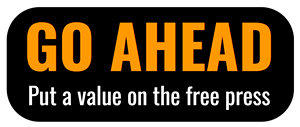LEWISTON -- Ask an American to name a classic war poster and odds are good that you’ll get Uncle Sam saying “I Want You” or the so-called Rosie the Riveter flexing her muscle.
These are just two of hundreds of posters that sold the public on war efforts during World War I and II. With images and few words they were designed to be eye-catching, thought provoking, and stirring enough to inspire people to act immediately.
Uncle Sam is among the posters on exhibit in “World War I & II: Pride and Propaganda,” on display at the Lewis-Clark State College Center for Arts & History. All are originals, many are rare. They are from the private collection of Jim and Sheron Givan of Yakima. They once hung on factory walls and billboards swaying people to do things they wouldn’t normally do -- like lend the government money, take an extra shift at work or eat corn, once widely considered pig food.
Jim Givan, 78, began collecting the posters as a teenager, later growing his collection as a commissioned officer with the U.S. Marine Corps. He grew up during World War II and remembers bringing leftover cooking fats to the grocery store with his mother. He got to keep the money. He didn’t realize then that the fats were used to make explosives, as shown in one poster where liquid pours from a pan onto a blaze of bombs and torpedoes. It’s one of more than 1,000 posters in his collection.
“As a rule, I only own one (of each poster). I’m trying to preserve them. The World War I posters are 100 years old. They need to be preserved and conserved to make sure they survive another 100,” said Givan, who has begun to exhibit the works around the West.
“I didn’t buy them to keep them in my attic. I want people to see them.”
There was no television or radio during World War I and posters became a main means of public communication, said Givan, who wrote all the text for the exhibit. Uncle Sam, found in the upstairs gallery, was created during this time. Besides recruitment, many World War I posters were designed to convince Americans to come to Europe’s aid. A dark-haired girl reaches out to the viewer under the words “Lest We Perish” in an appeal for relief for Armenia, Greece, Syria and Persia.
Americans were asked to send food overseas as French farmlands became battlefields. Three women in long skirts pull a plow through a rocky field under the words: “Save the wheat. Will you help the women of France?” Other posters encouraged Americans to eat alternatives like corn or fish. “They Feed Themselves,” one poster reasoned. Preferred pork and beef was canned and sent to soldiers overseas. In Givan’s opinion there are very few true propaganda posters. Most of the war posters are trying to sell something, like the idea of conservation or working harder.
An exception to this is an illustration of a Nazi bayonet driven through the middle of a Bible over the words, “This is the enemy.”
“You have to decide in your own mind, do you want this to happen in the United States,” Givan said of the 1942 poster.
One of the most powerful displays in the exhibit is Norman Rockwell’s “Four Freedoms,” four massive posters that helped show the public why World War II was necessary. In “Freedom from Want” a family sits down to a Thanksgiving feast. In “Freedom from Fear” a mother tucks children in bed as their father watches, newspaper in hand with headlines screaming of bombings and horror.
Another famous illustrator in the exhibit is Theodor Geisel, later known as Dr. Seuss. Geisel was drafted into the Army as a captain in the propaganda department, Givan said. Among his unsigned works were informational posters about the dangers of malaria featuring a barb-nosed mosquito named Ann.
“She drinks blood. Her full name is Anopheles Mosquito and she’s dying to meet you,” it reads. “Ann moves around at night (a real party gal).”
While not fatal, malaria made soldiers ineffective for long periods. The posters taught them to protect themselves with netting and canisters of DDT.
Americans were encouraged to finance the war through war bonds. Bonds were in small denominations so that
everyone could afford to buy in, Givan said. War bond posters often tugged on heartstrings. In one, tears run down an old woman’s face while rubble smokes behind her. “And we talk about sacrifice,” the poster reads, reminding Americans they really didn’t have it so bad.
If You Go
What: “WWI & WWII Pride and Propaganda” When: Through July 16 Where: Lewis-Clark State College Center for Arts & History, 415 Main St., Lewiston Cost: Free. Donations of fresh or canned foods will be accepted for a food drive. Gallery hours are 11 a.m. to 4 p.m. Monday through Saturday.
Special programs begin at 5:30 p.m. unless noted
June 16 - “Re-Root: Take Back Your Food,” panel discussion on urban gardening June 22 - “Food Will Win the War,” talk by Amanda Van Lanen, LCSC history professor June 23 - Film “Plant this Movie,” 5 p.m. reception with filmmaker Karney Hatch, 6 p.m. showing June 30 – Film “The Story of America’s Female Patriots: Unsung Heroes” July 7 – “Beyond Rosie the Riveter: Propaganda in Popular Women’s Magazines during WWII,” talk by Amanda Van Lanen, LCSC history professor























